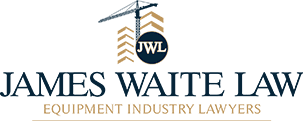By James Waite Rental Management Magazine
UNDERSTANDING THE NEW STIMULUS BILL; WHAT’S IN IT THAT CAN APPLY TO YOUR RENTAL BUSINESS
QUESTION: A NEW STIMULUS BILL WAS JUST PASSED BY CONGRESS AND I’M TRYING TO SET ASIDE A FEW MINUTES TO READ ALL 5,000-PLUS PAGES, BUT I’D SURE LIKE TO GET A CONDENSED VERSION IF YOU HAVE ONE HANDY.
Answer: The Consolidated Appropriations Act, 2021, which is tied to a $1.4 trillion resolution to fund the government through September 2021, adds $300 to weekly unemployment benefits and includes more than $300 billion of aid for small businesses. It also allows for tax deductibility for business expenses paid with forgiven Paycheck Protection Program (PPP) loans, includes new PPP funding and offers businesses facing significant revenue reductions the opportunity to apply for a second PPP loan.
The Senate approved the bill with a 92-6 vote on Dec. 21, shortly after the House of Representatives approved it 359-53. Now that the bill has been signed into law, here are, in my opinion, some of the more important highlights for equipment dealers and lessors.
Key provisions of the new law include:
$600 per person for certain qualified individuals. The law sets aside $166 billion to fund economic impact payments of $600 for individuals making up to $75,000 per year and $1,200 for married couples making up to $150,000 per year, as well as a $600 payment for each dependent child.
$325 billion in small business funding. The law provides more than $284 billion to the U.S. Small Business Administration (SBA) for first- and second-round PPP forgivable small business loans and $20 billion for Economic Injury Disaster Loan (EIDL) grants to businesses in low-income communities. In addition, $15 billion has been allocated to live venues, independent movie theaters and cultural institutions that have been required to close, and $12 billion has been earmarked for businesses in low-income and minority communities.
Employment-related tax credits and expenses. The new law extends the employee retention tax credit and several other tax provisions that were set to expire. It also temporarily allows for tax deductibility of 100 percent, rather than the current 50 percent, of the cost of employee meals provided by a restaurant — effective only for expenses incurred after Dec. 31, 2020, through Dec. 31, 2022.
Unemployment benefits. The law sets aside $120 billion to provide workers receiving unemployment benefits an additional $300 per week until March 14, 2021. The Pandemic Unemployment Assistance (PUA) program, which provides coverage for the self-employed, gig workers and others in nontraditional employment, and the Pandemic Emergency Unemployment Compensation (PEUC) program, which provides additional federally funded unemployment benefits to individuals who exhaust their regular state benefits, also were extended for an additional 11 weeks. The “Fed-Ed” program, which provides additional funds for individuals who have exhausted the above benefits, also was continued through March 14, 2021. In addition, a supplement of $100 per week to certain mixed-earners also was added to the array of available benefits.
New transportation funding. The act calls for $45 billion in transportation funding, including $10 billion for state highways, $14 billion for transit systems, $2 billion each for airports and intercity buses, $16 billion for airlines and $1 billion for Amtrak.
Broadband expansion funding. About $7 billion was included for expansion of broadband telecommunications systems.
Childcare assistance. $10 billion was earmarked for childcare assistance.
Educational funding. $82 billion was included for educational institutions, including support for HVAC repair and replacement intended to limit virus transmission.
Emergency rent/eviction moratorium. $25 billion in emergency rental aid also was included in the new legislation, as was an extension of the national eviction moratorium through Jan. 31, 2021.
Health-related expenses. $22 billion for health-related expenses incurred by state and local governments.
Emergency food assistance. $13 billion was allocated for emergency food assistance, which includes a 15 percent increase for six months in Supplemental Nutrition Assistance Program (SNAP) benefits.
New PPP loans will be available to first-time qualified borrowers and to businesses that previously received a PPP loan. Prior PPP loan recipients may apply for up to $2 million of PPP funding, if they:
- Have 300 or fewer employees.
- Have used or will use the full amount of their first PPP loan.
- Can show a 25 percent gross revenue decline in any 2020 quarter compared with the same quarter in 2019.
New PPP loans also will permit first-time borrowers from the following groups:
- Businesses with 500 or fewer employees that are eligible for SBA 7(a) loans.
- Sole proprietors, independent contractors and eligible self-employed individuals.
- Providers of accommodations and food services — such as those with North American Industry Classification System (NAICS) codes starting with 72 — that have fewer than 300 employees per physical location.
- Not-for-profits, including churches.
The law provides more than $284 billion to the U.S. Small Business Administration (SBA) for first -and second- round PPP forgivable small business loans and $20 billion for Economic Injury Disaster Loan (EIDL) grants to businesses in low-income communities.
The new law also allows borrowers that returned all or part of a previous PPP loan to reapply for the maximum amount available to them.
As was the case with respect to the first round of PPP, the costs eligible for loan forgiveness for new PPP loans will include rent, utilities, payroll and covered mortgage interest. The new PPP loans, however, include the following additional potentially forgivable expenses:
- Covered worker protection and facility modification outlays, including those for personal protective equipment (PPE), incurred in connection with efforts to comply with COVID-19 federal health and safety guidelines.
- Payments to suppliers that are necessary for continuation of operations.
- Covered operating costs such as software and cloud computing services.
PPP borrowers may apply for loan amounts of up to 2.5 (3.5 for hotels and restaurants) times their average monthly payroll costs in the preceding year or the calendar year, but the maximum loan amount has been reduced from $10 million to $2 million.
To be eligible for forgiveness, borrowers will be required to spend at least 60 percent of the borrowed funds on payroll over a covered period of either eight or 24 weeks.
Importantly for many small businesses, the new law also creates a simplified forgiveness application process for loans of $150,000 or less, requiring only a one-page certification identifying the number of employees the loan enabled the borrower to retain, the estimated total amount of the loan spent on payroll costs and the total loan amount. Borrowers cannot be required to submit additional materials except as necessary to substantiate revenue losses and/ or comply with other statutory or regulatory requirements. Borrowers will, however, be required to retain relevant employment records for four years, and other records for three years, which the SBA will have the right to review and audit for fraud.
The new law also:
- Includes set-asides for first- and second-time PPP borrowers with 10 or fewer employees, newly eligible PPP borrowers, and for loans made by community lenders.
- Repeals the requirement that borrowers deduct EIDL advances from their PPP forgiveness amounts.
The new law also provided some much-needed clarity with respect to the deductibility of expenses paid with forgiven PPP funds. The new law states that such expenses are tax-deductible, effectively superseding prior IRS guidance which had indicated that such expenses could not be deducted. It goes on to explain that “no deduction shall be denied, no tax attribute shall be reduced, and no basis increase shall be denied, by reason of the exclusion from gross income provided.”
Importantly, this applies both to loans under both the original PPP program and to new PPP loans.
VIEW ARTICLE ON RENTAL MANAGEMENT MAGAZINE WEBSITE







